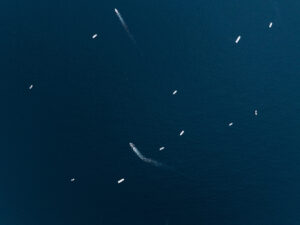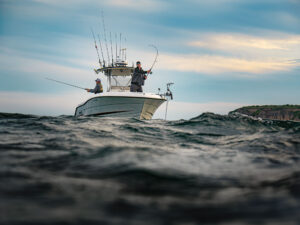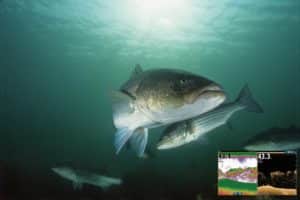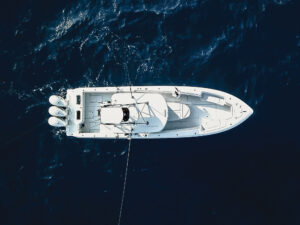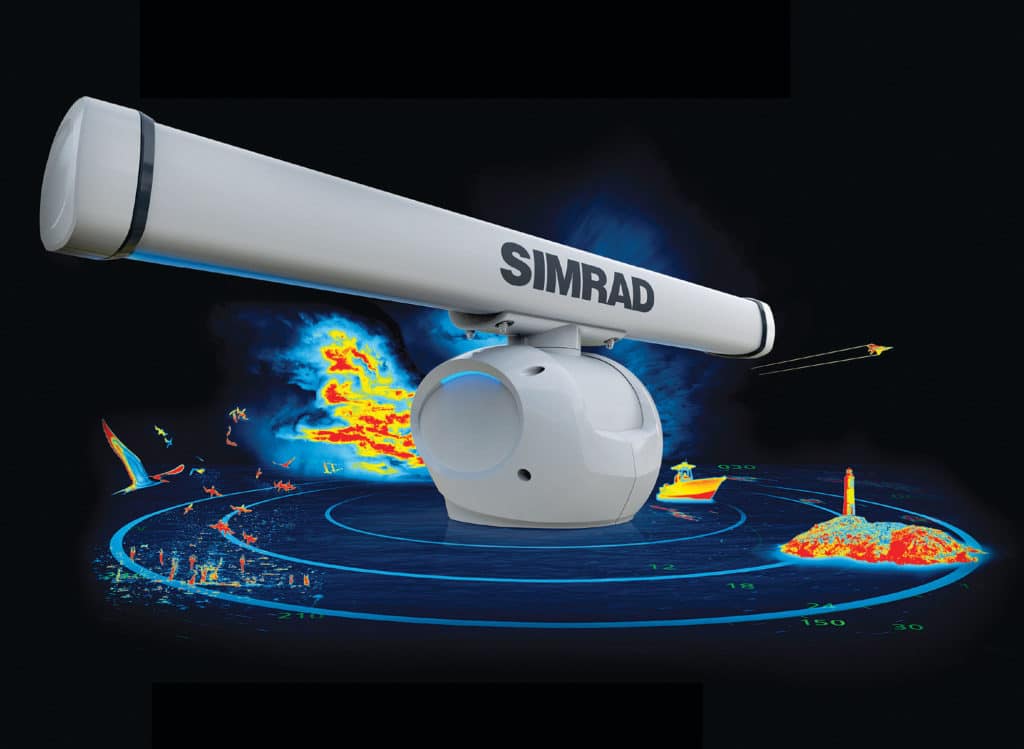
An angler’s best friend might be his fish finder, but radar should at least be a cherished companion. Radar can help locate birds — and, therefore, fish — and it adds a valuable element of safety in bad weather, at night or in high-traffic situations.
Significant changes to radar technology over the past eight years make those statements even more apropos. In 2009, Simrad introduced BR24 Broadband, the first recreational marine solid-state radar on the market, which used Frequency Modulated Continuous Wave technology. Since then, the company debuted 3G ($1,499) and then 4G ($1,999) radar, with FMCW, and in 2015, Halo ($4,500 to $5,500) — a solid-state product that employs pulse‑compression technology.
In 2016, Raymarine (Quantum; $1,599), Furuno (DRS4D-NXT; $2,600) and Garmin (Fantom; $1,999 to $7,499) entered the solid-state radar race with pulse-compression units; Humminbird followed in early 2017. In the case of Furuno and Garmin, those solid-state radars also came with a perennial weather favorite: Doppler technology.
But what does all that mean, and how can it help fishermen? Let’s deconstruct the fancy words.
Magnetron Vs. Solid State
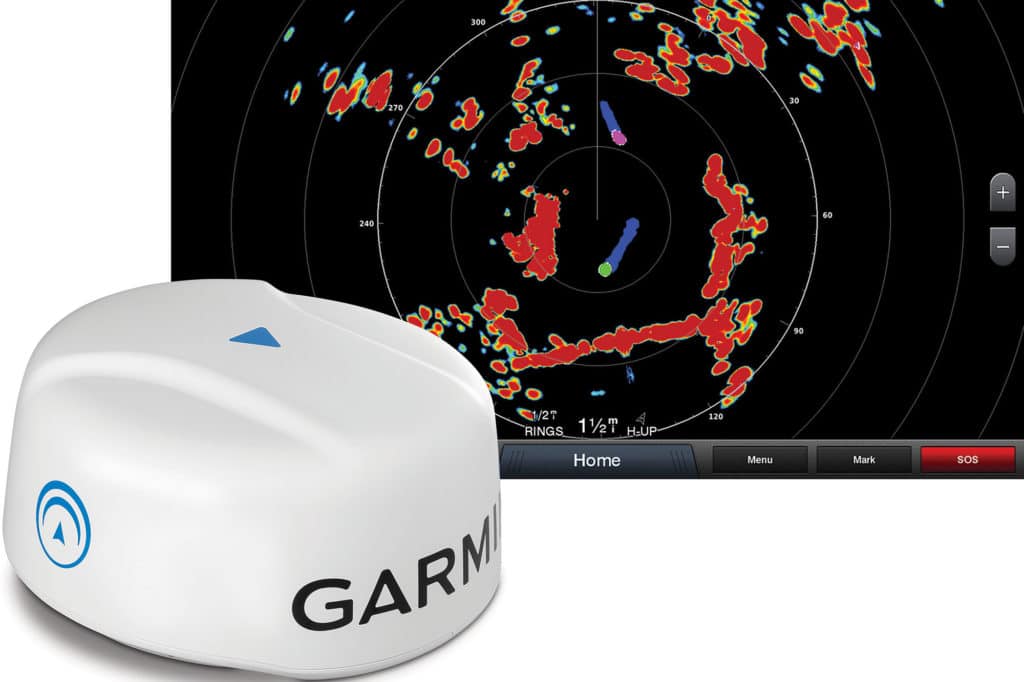
When I first heard “solid state” applied to radars, I have to say, I thought way back to “solid-state — transistor — radios,” which says something about my age. But when talking about radar, solid state simply means the product uses circuit boards instead of vacuum tubes or, more recently, chambers, explains Adam Murphy, Raymarine global product manager for radars and sonars.
Magnetron radars came first — in the 1940s. But don’t let that anachronism fool you. The improvements made to digitally processing the magnetron radar’s returns have brought the technology light-years forward. To be sure, both magnetron and solid-state radars still have a place on the water.
The two differ in several key ways.
Magnetron radars of equivalent size weigh more and emit a much higher-powered microwave pulse — in kilowatts compared with watts for solid state. On the other hand, solid-state units can operate very efficiently with their lower power, and have sensitive receive components, Murphy says.
Because of the magnetron’s significant microwave emissions, some question their safety; others say a human would need truly prolonged exposure to suffer any ill effects. Either way, some companies, such as Garmin, have created operational safe zones within their systems so the radar doesn’t emit a pulse as it sweeps by the helm station.
Long Distance
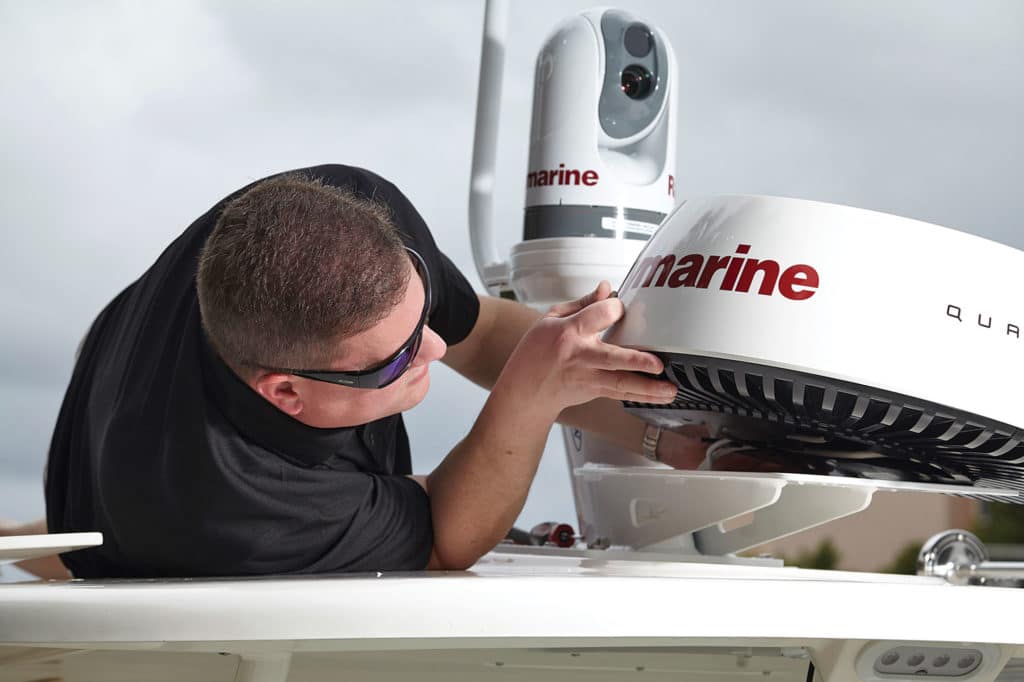
The magnetron’s powerful signal usually means it picks up small targets much farther away than solid state, making it the best option for bird radar. Furuno’s new DRS6A X-Class ($5,395 to $6,240), a magnetron product, was specifically designed and dialed in to find birds.
Solid-state technology sees closer-in targets — some even a mere 15 to 20 feet away — much more clearly.
Magnetron radars require a warmup period. Heating the magnetron to get it on frequency used to take as much as two and a half minutes, says Furuno’s Tim Moore, general manager of the company’s East Coast facility. But that waiting time has been reduced to about 60 seconds.
Historically, magnetron radars failed much earlier in their life span — after about 3,000 or 4,000 hours — compared with solid-state products that can last hundreds of thousands of hours. But new magnetrons have nearly caught up.
Operational Updates
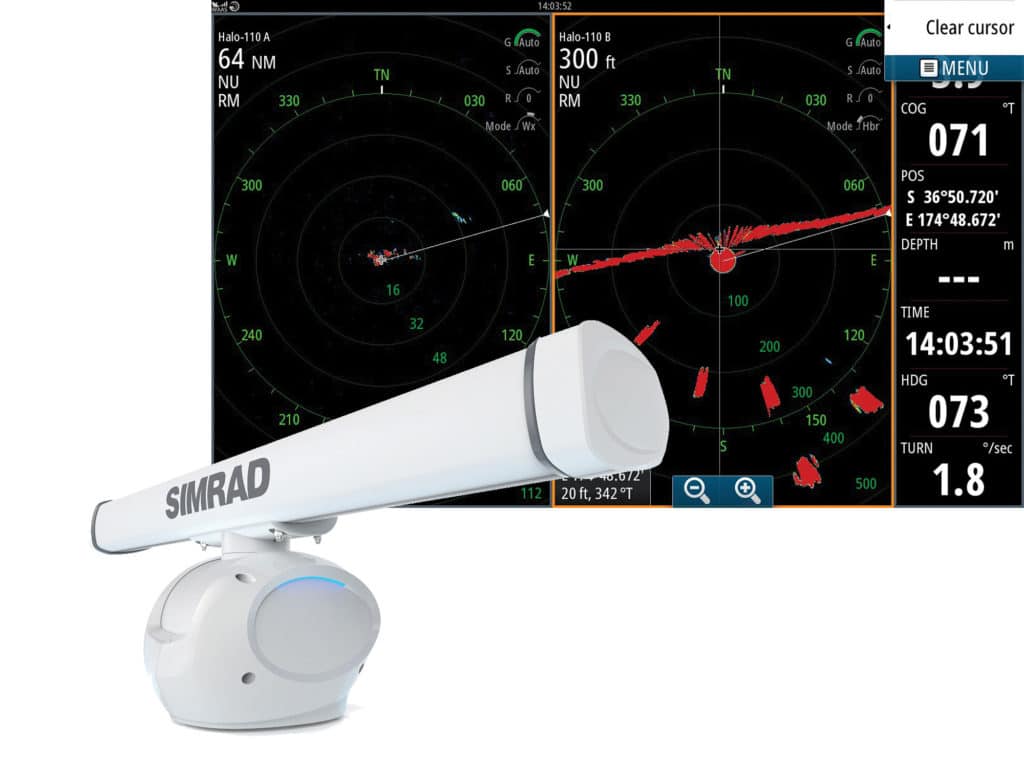
With solid state has come the use of pulse-compression technology, which is similar to chirp in fish finders. The emitted signal changes in frequency, and results in much higher target resolution. Users can now discern two separate targets that are spaced tightly together.
Exactly how each company uses pulse compression can differ. Simrad’s Halo radar appears unique: “One pulse and five chirps stitch together into a comprehensive display,” says Mark Harnett, Simrad product manager. “The chirps increase in frequency as they go out. We’re always transmitting the appropriate chirp for that specific range.”
Other companies use fewer pulses or chirps. “Quantum sends out a pulse and then waits and listens for the return,” Murphy says. “But the pulses are smaller, so you don’t have to wait long to receive.”
Shorter-range radars also don’t need multiple pulses. For instance, depending on which size open-array antenna you buy for Halo, you can expect to see targets up to 72 nm away. Quantum’s dome radar units — which incidentally work off the Wi-Fi from a Raymarine display, or via hard wiring — range out to 24 nm.
Solid state has also ushered in the use of Doppler technology to provide users an almost instant and detailed look at approaching vessels. Doppler, used in terrestrial weather forecasting and explained as the ability to discern a signal leaving from a signal approaching by its frequency or pitch change, clearly shows any potential collision threats on the water.
Garmin introduced its Fantom 4- and 6-foot open arrays with Doppler in February and its dome versions (Fantom 18 and 24) in November. Furuno introduced its NXT 24-inch Doppler radome this past February. Both companies’ products show approaching targets (moving more than 3 knots) in red (or in one case with Garmin, magenta).
Doppler Unique
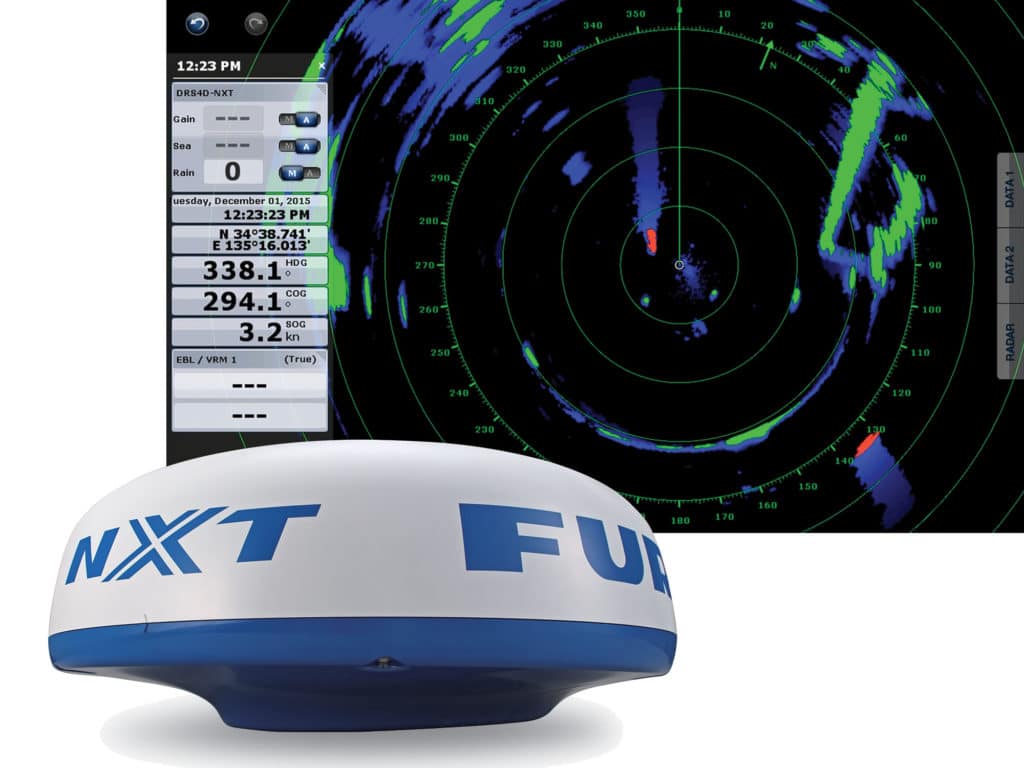
All of Garmin’s Fantoms feature an industry-leading (for solid state) 40 watts of output power, which bests its competitors by 15 to 20 watts. Fantom 4 and 6 antennas spin at 24 or 48 rpm, depending on mode, and range out to 72 nm. Fantoms 18 and 24 operate at those same rpm rates and show targets to 48 nm.
Furuno’s NXT features a three-speed motor that operates at 48 rpm on short range, 36 rpm at slightly longer ranges, and finally 24 rpm at its farthest range of 36 nm. It also employs beam-sharpening or -narrowing techniques (as do Raymarine and Simrad) that can dial up target detail.
In coming years, marine-electronics companies expect to grow pulse-compression technology out of its infancy. “With signal processing, we’ll refine the technology even more. As costs come down, we’ll start to see more power in pulse compression. We could see smaller radars as well,” says Lindsay Lilburn, Simrad systems engineer.
But what about 10 or 15 years down the road? Very expensive phased-array technology could eventually come down in price, making some form of 3-D radar possible. Nanotechnology too could spread to the marine niche, miniaturizing components and putting tiny systems along the edge of a T-top. Imagine that!

